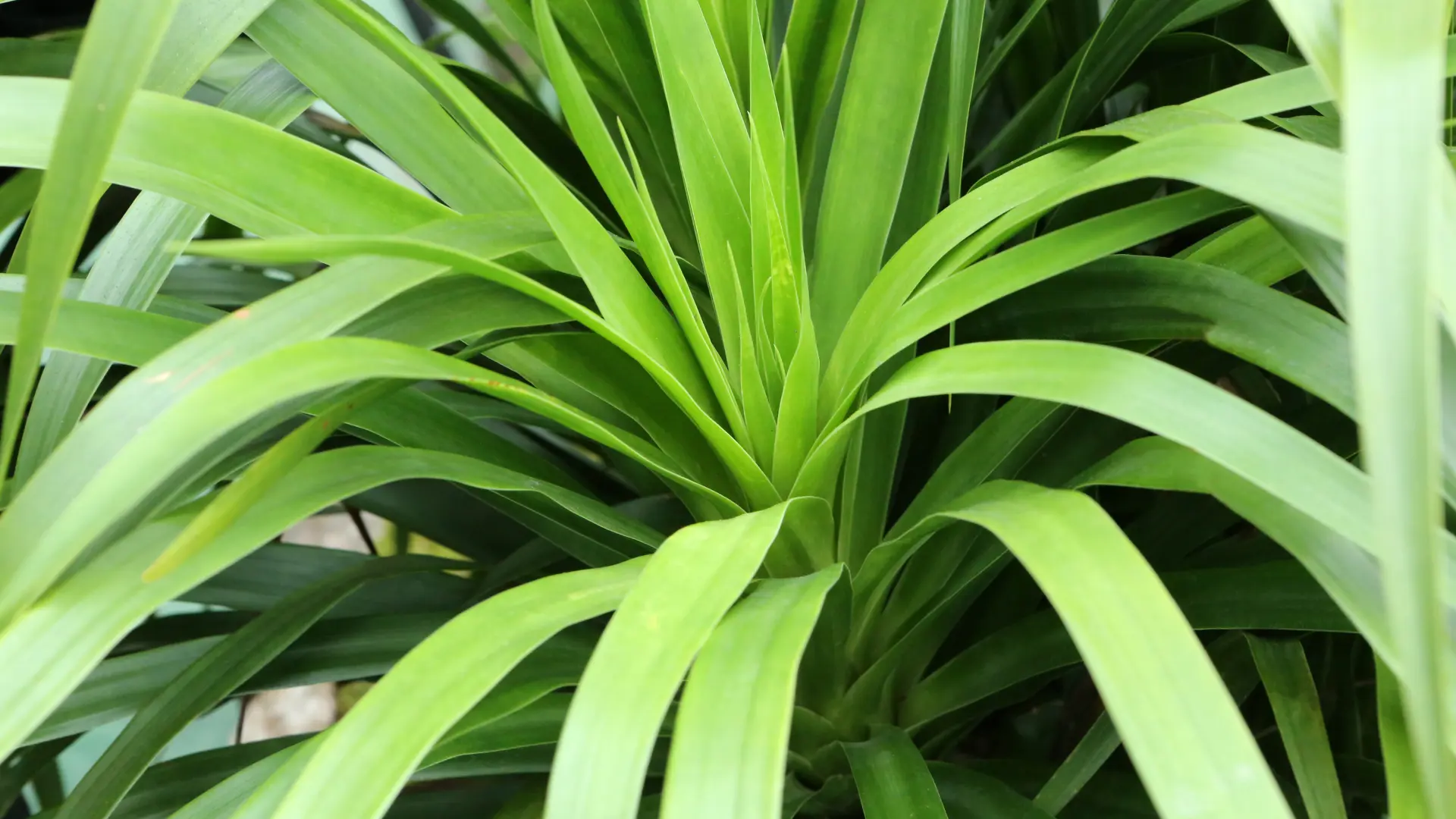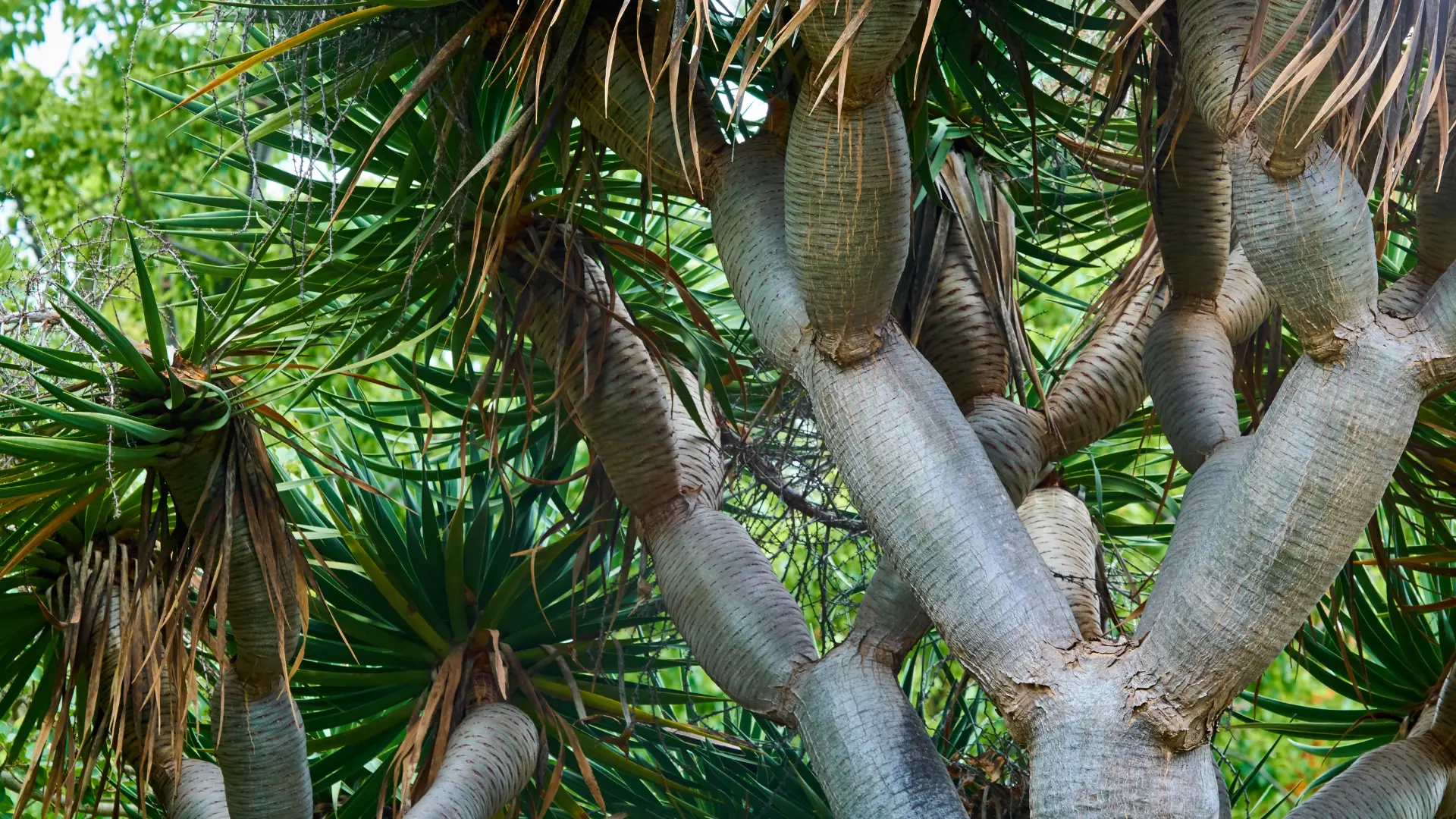Dracaenas are popular because they are typically easy to maintain in homes and offices. They do, however, have some issues of their own.
Many blogs I’ve read have mentioned brown tips and eventual death due to underwatering; however, I find that most gardeners who are new to Dracaena tend to overwater. Dracaena plants should only be watered every 2-3 weeks. The moment I reduced the frequency of my watering, the brown tips and leaf blemishes on the new growth disappeared, and soon I had a beautiful, healthy plant.
In the section below, I go over the fundamental requirements for your Dracaena, as well as some less common causes of brown tips and leaves and easy-to-spot issues like root rot and excessive sun exposure. I’ll show you how to revive your plant from each ailment and how to keep it healthy in the future.
How Does a Healthy Dracaena Plant Look?
A wide range of plants falls under the Dracaena family. As a result, it is impossible to describe how a specific plant should look because they come in various colors and forms. However, the leaves of a healthy plant will appear succulent and slightly glossy.

While some varieties have solid green leaves of various shapes, others have varied leaves with yellow stripes on some parts. No matter what shade the leaves are, a glossy, succulent appearance indicates a healthy plant. They don’t droop, even though they taper downward. They have a smooth, organic semicircular shape, with the tip eventually pointing downward and the stem extending outward.
How Can I Revive A Dying Dracaena Plant?
You must first identify the source of your Dracaena’s stress before addressing it. Next, consider what it needs and what may be missing from its current care plan. Let’s dive in.
Dracaenas Dying from the Top Down
Dracaenas develop new leaves from their crown, which eventually wither away to form a trunk or stem. If the plant’s top does not receive the resources it requires to grow new stems, it will begin to die. Crown dieback is exacerbated by overwatering, malnutrition, or poor lighting. However, disease and under-watering are other potential causes of these symptoms.
If the crown of your plant is severely affected or dead, it is best to remove it altogether. Whatever the reason, a dead crown stops the Dracaena from growing new leaves, ultimately resulting in the plant’s death. Thankfully, Dracaena are resilient and can create new growth points after the old, dead one is gone. Use clean shears to simply cut off the dead crown a few inches below it. Then, throw away the old, dead crown.
You just need to wait at this point. If the medium is sufficiently watered and the light levels are appropriate. You’ll see that the plant’s top is sprouting new buds. This spring, I’ve had up to four new shoots from the same Dracaena I trimmed.
Dracaena Dying After Repotting
Dracaenas are sluggish-growing plants that enjoy spending a long time in the same pot. Even these tough specimens will require repotting every two to three years. There are many possible reasons for repotting dieback. Repotting shock is one such example.
The procedure shocks the plant’s root system, and it could take up to a week for the roots to start acting normally again.
However, your new growing medium might be to blame if your Dracaena fails to recover. A newly potted plant might also be relocated to a more noticeable spot, where it might be subjected to excessive or insufficient light, which is typical.
Dracaena Leaves Turning Yellow and Falling Off
As they get older, they lose their leaves, which is how they acquire the recognizable bare trunk. If only the older leaves are falling from below the crown and the new growth is healthy, there should be no cause for concern.
This is a typical phase of the plant’s life cycle. Other factors contributing to lower leaves turning yellow and dropping off include low light and insufficient watering. Dracaena prefers to give up its oldest leaves first when resources are scarce.
You can quickly fix this by giving your Dracaena a good soak. The best way to hydrate a dry plant is from below. It directs moisture to the root system, where it is really needed.
This method needs a basin or tub to contain the thirsty Dracaena plant. You will also require clean water, preferably rainwater, distilled water, or water that has been through filtration. T
To water from below:
- Remove the Draceana from its saucer or drip tray.
- Put the plant in the basin after it has been filled with water.
- Pour water into the basin until it is halfway up the pot’s side.
- Give the Dracaena at least 30 minutes to soak in the water. Refill the water as necessary.
- Before putting your Dracaena back in its container, drain it for at least 15 minutes.
No matter the variety, you must ensure the Dracaena is totally dry before watering again. Water it from above if your Dracaena plant is too large to fit in a basin.
With time, dry-growing soil frequently becomes hydrophobic. They are unable to hold water as a result and instead discard it. Take your time when watering dried-out soil from above. I only add about a quarter cup at a time, distributing it evenly across the soil’s surface and letting it slowly percolate through the mixture.
For large pots, it might take a dozen of these small doses before the soil is prepared for soaking; wait until you see tiny drips coming out of the drainage holes. After that, add enough water to submerge the mixture thoroughly. As soon as it drains, the Dracaena should resurface in its original location. Allow it to dry completely before watering again.
Overwatered Dracaena
D. Marginata (dragon trees), a magnificent variety of Dracaena, is especially prone to overwatering. They originated in the arid regions of Madagascar, where they have developed the ability to survive in sandy soil containing little to no moisture.
They consequently do not handle overwatering well. Overwatered dragon trees have limp, discolored, and soft leaves. They won’t grow and start losing their leaves from the bottom up.
Repotting is the first step in saving a Dracaena from overwatering. You can check the root system of your Dracaena for indications of rot or other damage by removing it from its current location.
The next step is to select a new pot and soil. More drainage holes are preferable, so ensure that your new container has at least two. It is best to use a coarse, free-draining cactus or succulent mix.
You might also need clean scissors to trim sick and rotten roots. Inspect the roots for indications of rot after removing the sick Dracaena from its pot and thoroughly rinsing the old medium with clean water.
Dracaena roots should be pale and fibrous. If they’re soft and mushy, or if they’re turning brown or black, they’re rotting. The Dracaena can then be moved to a new pot and placed back in its original location. Hopefully, your Dracaena plant will return to normal in a week or two.
No matter what kind of Dracaena you have, you must let it completely dry out in between waterings. In the winter, when growth slows, it is sufficient to water your plant once every two weeks. If you live in the South, Dracaenas only require a few good soakings per month to stay healthy.
A moisture meter is necessary if you find it difficult to leave your plants alone for extended periods. This helpful tool allows you to monitor the root mass’s moisture content, giving you a sense of security.
Dracaena Marginata Soft Stem

Your Dracaena is likely suffering from a fungal disease if the stem becomes soft. This is particularly true if the stem is soggy from the base to the tip.
In most cases, overwatering is the cause of fungal pathogens that attack otherwise healthy plants. Never lose hope, even if your plant is now just a stalk after losing all of its leaves. It is difficult to believe how quickly these real survivors can overcome adversity.
But if the stem is dry but still sturdy when touched, it might only need watering and a short time in bright light to recover.
The plant becomes darker if the stalk is wet and soggy. It’s possible that you overwatered your plants, or it now has a fungus infection. Although there is much less chance of recovery, if your Dracaena is big enough, there might still be living in it. It could recover with the aid of fresh soil and lighting.
Pests and Diseases on Dracaenas
As inviting as it is to admire a Dracaena, pests will take advantage of the opportunity to wreak havoc on this tropical plant. These pests, including mealybugs, scale, aphids, thrips, and spider mites, enjoy sucking the lifeblood from your plants.
On the other hand, diseases usually result from inadequate care. Particularly, excessive watering without drainage at the pot’s base causes root rot, poor airflow, and too much moisture, which causes a fungal disease of the foliage.
Every leaf should be examined from the top, bottom, and along the stems. From top to bottom, pay close attention and keep an eye out for any wriggling larvae in the soil. Be a detective, and don’t be scared to use a magnifying glass to see if there are any hidden pests.
To avoid a full-blown infestation, quarantine the affected plant away from the others. Plastic wrap the soil surrounding the pest-infested plant. Use a showerhead to rinse the plant thoroughly. Do it in the morning to allow the plant to dry off during the rest of the day.
If your Dracaena can tolerate it, use insecticidal soap or horticultural sprays. I advise using either Neem Seed Oil or Insect Soap. Over the next few days, repeatedly spray these directly onto the pests until all indications of an infestation have vanished.
For a few more days, keep a close eye on the plant to ensure no new pests appear.
The Dragon Tree and other members of the Dracaena family are tenacious and hardy. Plants can be just as erratic as any other living thing.
However, saving a dying dracaena is simpler than propagating a new one. Also, saving it would bring you a much-needed emotional boost if you have cared for a plant for a long time. The above instructions are relatively comprehensive, and following them will give your plant a new lease on life. For the best results, stick to it.
